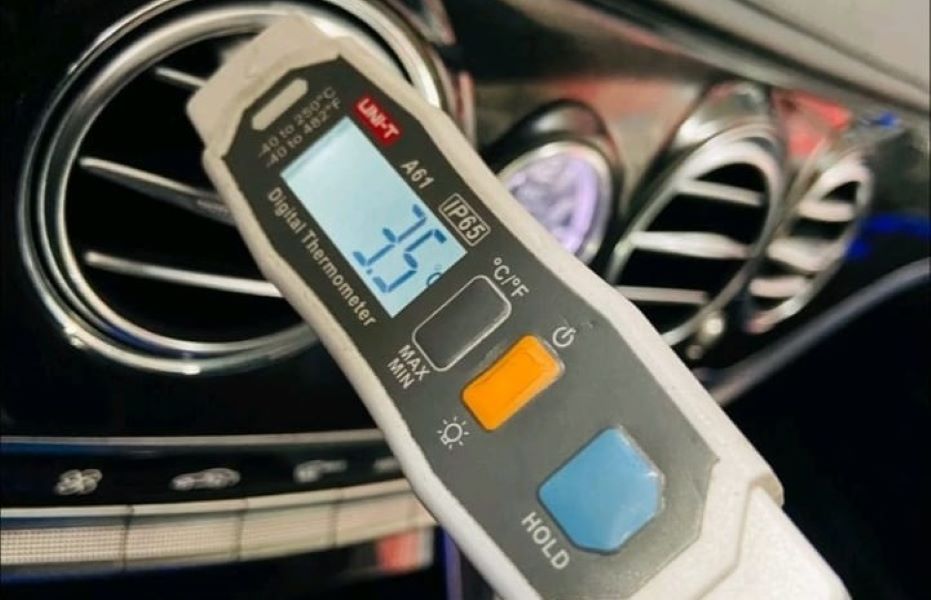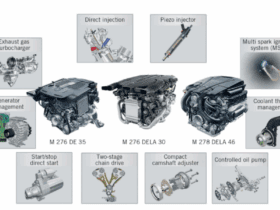Table of Contents
Why Isn’t My AC Working in My Car? Case Study: Mercedes-Benz S-Class W222
If you’ve ever asked yourself, “Why isn’t my AC working in my car?”, you’re not alone. A faulty air conditioning system is one of the most common problems drivers face, and when it happens in a luxury sedan like the Mercedes-Benz S-Class W222, it can feel even more frustrating.
The AC system in modern vehicles is a complex network of compressors, condensers, sensors, and regulators. Even a small malfunction can stop it from cooling effectively. This article explores a real-world case study of a Mercedes-Benz S-Class W222 with AC failure. We’ll go through the customer complaint, diagnostic process, component replacements, and final resolution, while also covering common causes and FAQs to help you understand and fix similar issues.

Vehicle Overview: Mercedes-Benz S-Class W222
- Model: Mercedes-Benz S-Class W222
- Category: Luxury sedan with advanced THERMOTRONIC automatic climate control
- Key Feature: Multi-zone climate control system for maximum passenger comfort
Despite its cutting-edge features, the S-Class AC system can suffer from refrigerant leaks, compressor issues, or regulator malfunctions.
Customer Complaint: AC Not Working
The customer arrived with the question: “Why isn’t my AC working in my car?”
- – Symptom: Cabin was not cooling despite the AC being switched on.
- – Driver Concern: Reduced comfort during hot weather and worry about high repair costs.
Initial Diagnosis
The first step was a short diagnostic test using Mercedes-Benz’s diagnostic software.

Key Findings:
- – Low refrigerant level → flagged by the AC control unit.
- – Possible compressor malfunction → not regulating pressure properly.
- – Suspected condenser leak → explaining the refrigerant loss.
These findings provided a clear direction for further troubleshooting.
Step-by-Step Troubleshooting Process
1. Visual Inspection and System Check
- – Refrigerant level check: Confirmed to be low, a direct cause of poor cooling.
- – Compressor & regulator inspection: Both components were not functioning correctly.
- – Condenser check: Signs of a leak detected, which explained the refrigerant loss.

2. Component Replacement
Based on the inspection, the following components were replaced:
- – AC Compressor: Restored refrigerant circulation and system pressure.
- – AC Regulator: Ensured proper control of cooling cycles.
- – AC Condenser: Fixed the source of refrigerant leak.





3. System Pressure Test with Nitrogen
- – The system was pressurized with nitrogen at 15 bar.
- – Overnight monitoring ensured there were no leaks.
- – Results showed the system was fully sealed.
4. Refrigerant Refill
- – The AC system was recharged with refrigerant gas as per Mercedes-Benz specifications.
- – Proper refrigerant levels restored cooling efficiency.

5. Final System Check
- – All diagnostic values were within range.
- – AC successfully delivered cold air throughout the cabin.

Explore More Mercedes AC and Climate Control Issues
For a deeper dive into all AC-related issues, visit our hub page: Mercedes AC and Climate Control Problems – Complete Troubleshooting Guide. You’ll find grouped case studies, step-by-step diagnostics, and prevention tips.
Quick Reference Table – Mercedes S-Class W222 AC Failure
| Step | Action Taken | Finding | Result |
|---|---|---|---|
| Initial test | Scanned AC system | Low refrigerant fault | Leak suspected |
| Visual inspection | Checked compressor & condenser | Malfunction + leak | Parts identified |
| Replacement | Compressor, regulator, condenser | Old parts faulty | New OEM parts installed |
| Leak test | Pressurized with nitrogen | No leaks overnight | System sealed |
| Refrigerant refill | Added gas to spec | Correct charge restored | AC cooling |
Why Does AC Stop Working in Cars? Common Causes
| Cause | Explanation | Typical Symptom |
|---|---|---|
| Low refrigerant | Caused by leaks in hoses, condenser, or evaporator | Warm air from vents |
| Faulty compressor | Can’t circulate refrigerant | AC cuts off or blows hot air |
| Bad AC regulator | Fails to control compressor cycles | Inconsistent cooling |
| Condenser leaks | Damaged by debris or corrosion | Refrigerant loss |
| Electrical faults | Blown fuse or bad wiring | AC doesn’t switch on |
| Sensor failures | Wrong readings disrupt regulation | AC works intermittently |
Tips to Prevent AC Problems in Mercedes
- – Service regularly: Recharge refrigerant and check for leaks every 2 years.
- – Replace cabin filters: Every 12 months to improve airflow and reduce system strain.
- – Run AC in winter: Keeps seals lubricated and prevents leaks.
- – Clean condenser: Prevents overheating and damage from debris.
FAQs – Why Isn’t My AC Working in My Car?
Q1. Why does my Mercedes AC stop cooling suddenly?
Often due to low refrigerant levels, a faulty compressor, or leaks in the condenser or evaporator.
Q2. How do I know if my AC compressor is failing?
If pressures are equal, the compressor isn’t engaging, or strange noises are heard, it may be faulty.
Q3. Can I just recharge my AC without fixing leaks?
No. Refrigerant will escape again. Always repair leaks before recharging.
Q4. How much does it cost to fix AC in a Mercedes S-Class?
- – Refrigerant recharge: $200–$350
- – Condenser replacement: $600–$1,000
- – Compressor replacement: $1,200–$1,800
Q5. Why does low refrigerant cause AC not to work?
Refrigerant is essential for heat exchange. Without enough, the system can’t absorb and release heat effectively.
Conclusion
This Mercedes-Benz S-Class W222 case study illustrates how a simple question “Why isn’t my AC working in my car?” can uncover multiple faults.
The root causes were a faulty compressor, bad regulator, and leaking condenser. By replacing these components, performing a nitrogen leak test, and refilling refrigerant, the AC system was fully restored.
For Mercedes owners (and drivers in general), the key takeaway is clear:
- – Don’t ignore AC problems.
- – Perform structured diagnostics.
- – Use OEM parts for repairs.
By doing so, you’ll restore cooling performance and extend the life of your car’s climate control system.
Author
Written by: Mercedes Expert
Automotive Technical Trainer & Mercedes-Benz Diagnostic Specialist
With years of hands-on experience repairing and diagnosing Mercedes-Benz vehicles, specializes in case-study-based troubleshooting guides that blend workshop accuracy with educational clarity.
Last Updated: September 2025







Leave a Reply